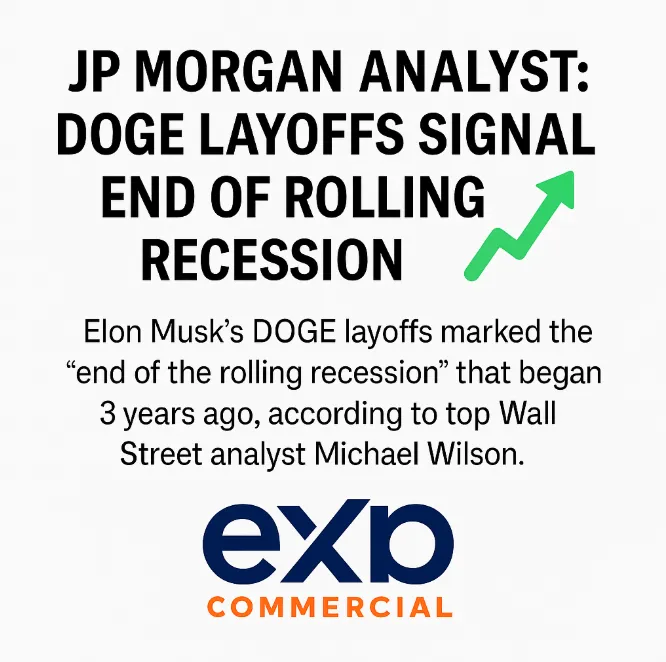
🚀 JP Morgan Analyst: DOGE Layoffs Signal End of Rolling Recession 📉
🚀 JP Morgan Analyst: DOGE Layoffs Signal End of Rolling Recession 📉
💡 Elon Musk’s DOGE Cuts May Have Marked the Bottom: What Investors Should Know 📊
JP Morgan Analyst: DOGE Layoffs Signal End of Rolling Recession 🚀📉
For the past three years, the U.S. economy has felt like it was in a recession—even though GDP numbers didn’t confirm it. Michael Wilson, Chief U.S. Equity Strategist at Morgan Stanley, says that feeling was real, calling it a “rolling recession.” And according to his latest note, the worst may now be behind us, with Elon Musk’s Department of Government Efficiency (DOGE) layoffs marking the turning point.
What Is a Rolling Recession?
Unlike a traditional recession where the entire economy contracts at once, a rolling recession moves through sectors over time. Since 2022, industries like tech, housing, retail, and energy all hit their downturns at different moments. The final domino? The government sector, where DOGE-driven layoffs cut over 280,000 jobs earlier this year.
Wilson argues this was the bottom. He cites April 2025’s “Liberation Day” stock market lows as the trough that ended the rolling downturn.
From Recession to Recovery
The good news: with every recession comes recovery. Wilson forecasts a “rolling recovery,” with small-cap stocks, corporate earnings, and investor confidence rebounding into 2026. His bull case even projects the S&P 500 climbing to 7,200 by mid-2026.
For commercial real estate (CRE) investors, this matters. Historically, CRE demand trails stock market recoveries. As corporate earnings rise, businesses expand—and they need more office, retail, industrial, and flex space. Investors who position early can catch the upswing.
Labor Data: Past Pain, Brighter Future
Job cuts peaked in March 2025, with payroll data revised downward by 911,000 jobs—one of the sharpest two-month adjustments in U.S. history. While the pain was real, Wilson says the worst is over. Earnings growth in small- and mid-cap companies has turned positive for the first time in years, a classic early-cycle recovery signal.
For CRE, stronger earnings mean tenants are healthier, lease renewals stabilize, and cap rate compression can return.
The Fed, Fiscal Policy & CRE Implications
Markets expect aggressive Fed rate cuts ahead. If the government labor market weakens again, those cuts may come even faster. For CRE investors, this is critical:
· 📉 Lower rates reduce financing costs.
· 🏗️ Developers can restart shelved projects.
· 📊 Asset values can rise as cap rates compress.
Meanwhile, the Trump administration’s “run hot” strategy may fuel growth but also carries inflation risks. If inflation accelerates, CRE investors should hedge with assets in growth corridors like Katy, Fulshear, and Houston’s industrial markets.
Takeaway for CRE Investors & Business Owners
The DOGE layoffs may go down as the symbolic end of a rolling recession that began in 2022. If Wilson is right, the next phase is a rolling recovery—and early movers in commercial real estate financing, acquisitions, and development can capture the upside.
Pro Tip: Now is the time to refinance at lower rates, lock in long-term debt, and explore expansion opportunities while others remain cautious.
https://www.houstonrealestatebrokerage.com/
https://www.houstonrealestatebrokerage.com/houston-cre-navigator
https://www.commercialexchange.com/agent/653bf5593e3a3e1dcec275a6
http://expressoffers.com/[email protected]
https://app.bullpenre.com/profile/1742476177701x437444415125976000
https://author.billrapponline.com/
https://www.amazon.com/dp/B0F32Z5BH2
https://veed.cello.so/FOmzTty6oi9
© 2023-2024 Bill Rapp, Broker Associate, eXp Commercial Viking Enterprise Team
